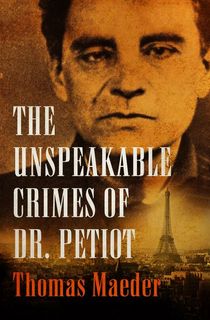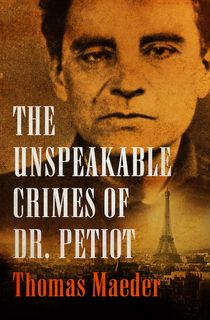March 1944: Thousands of people were desperate to escape Nazi-occupied Paris; and, many sources offered escape—for a price. Under the guise of helping citizens escape the country, Dr. Marcel Petiot collected a fee of ₣25,000 (which equates to $10,000 today). Instead of shepherding his clients to safety, however, he lured them to an empty house … and murdered them.
When neighbors complained about foul-smelling smoke escaping from 21 Rue Le Sueur, police and firemen broke into the building owned by Petiot and followed the source of the smoke to the basement. What they discovered there was a thing of nightmares.
Thomas Maeder’s The Unspeakable Crimes of Dr. Petiot explores the true account of a doctor-turned-killer’s heinous murders in gruesome detail.
[Policemen Joseph Teyssier and Emile Fillion], and a civil-defense officer who chanced to be passing by were led down to the basement, where they found two coal-burning stoves. The one on the left was cold, but the smaller one, to the right, was going full blast, and a human hand, apparently female, dangled from the open door. From the light of the fire the three officers discerned a pile of coal and the bottom steps of a short staircase on which were littered a head, skulls, arms, two nearly complete skeletons, shattered rib cages, feet, hands, jawbones, large chunks of unrecognizable flesh, and a quantity of small bones.
Want more true crime books? Sign up for The Lineup's newsletter and get the scariest stories delivered straight to your inbox.
[Commissaire] Georges Massu stared at the piles of remains. He took off his overcoat and climbed into the pit; the bones crunched sickeningly under his shoes and his trousers became covered with lime. In the basement kitchen he noticed that the large double sink was just long enough for an outstretched body and that its sloping bottom was steep enough for blood to flow down without coagulating before reaching the drain.
Want more true crime books? Sign up for The Lineup's newsletter and get the scariest stories delivered straight to your inbox.
Featured Photo: Courtesy of Archives de la Ville de Paris


